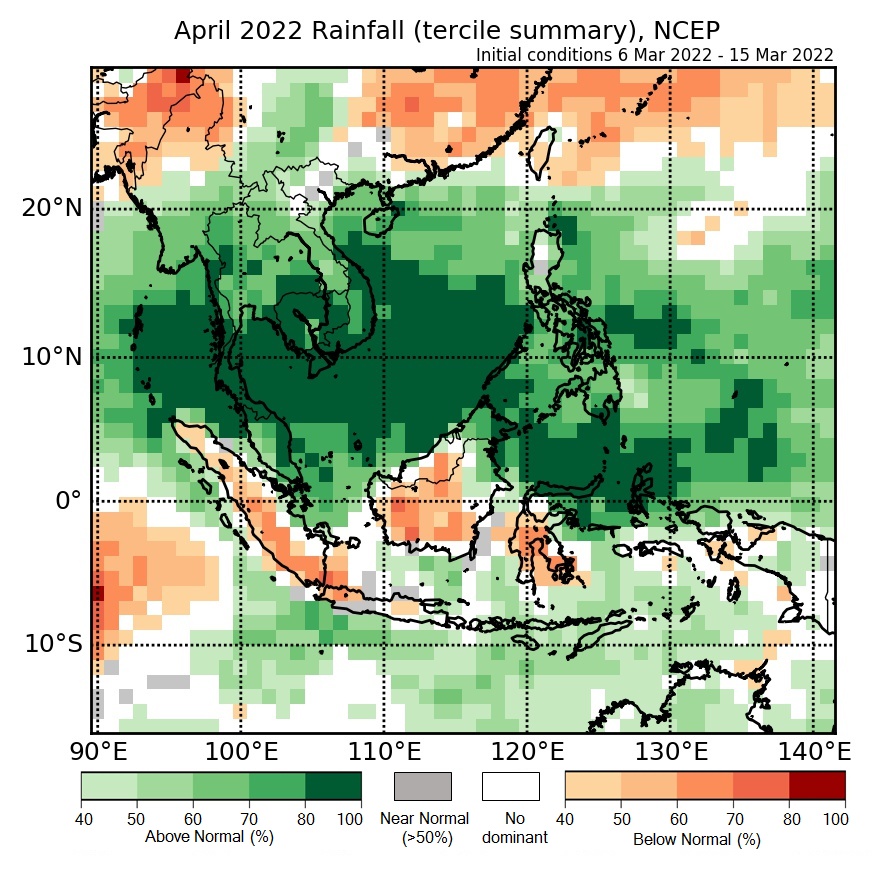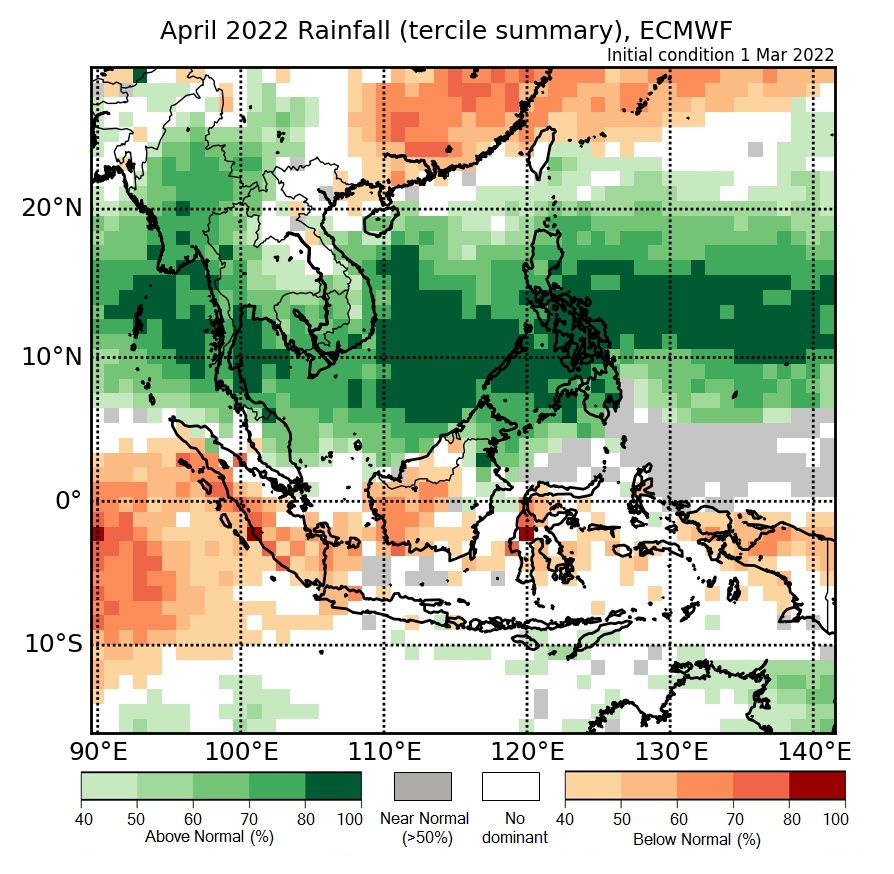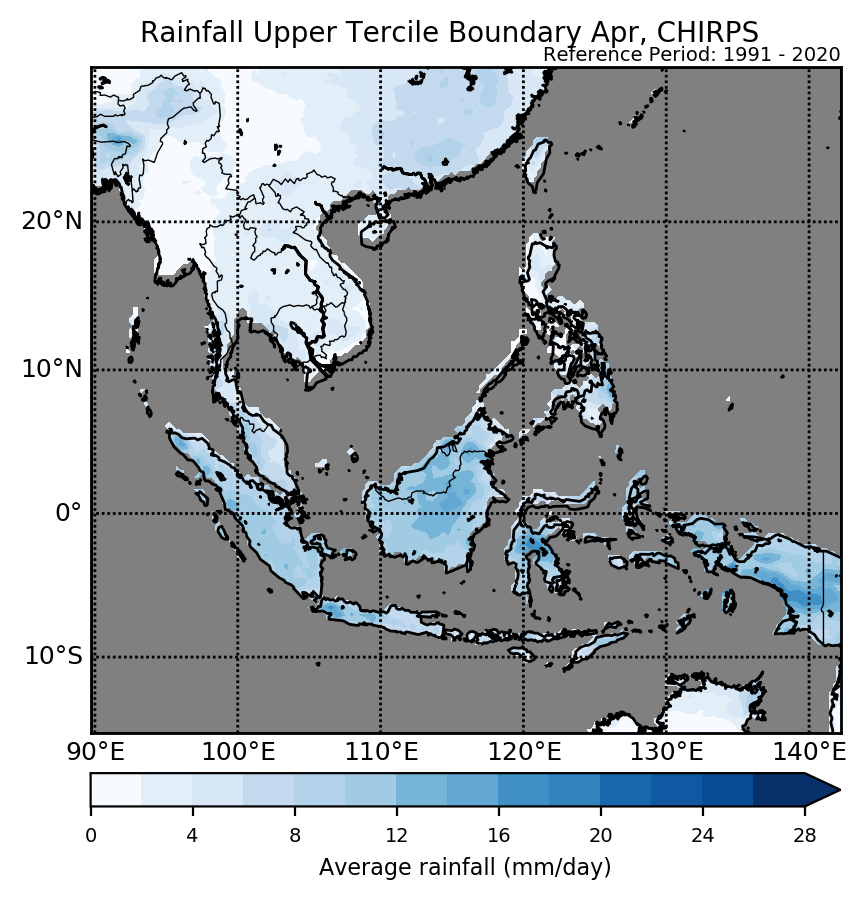Rainfall
Monthly Rainfall Outlook: April 2022
Issued: 31 Mar 2022
For April 2022, models predict above-normal rainfall over much of the northern ASEAN region.
For April 2022, above-normal rainfall is predicted for much of the northern ASEAN region, in particular the Philippines, northeastern Borneo, northern Sulawesi, Peninsular Malaysia and much of Mainland Southeast Asia, as seen in the multi-model ensemble (Figure 4). Over Mainland Southeast Asia, all three models predict an increased chance of above-normal rainfall for much of the region, with the UK Met Office model (Figure 3) having the largest spatial extent. The models’ skill is moderate to relatively good for the Philippines, northeastern Borneo, northern Sulawesi, southern Mainland Southeast Asia and Peninsular Malaysia, with low to moderate skill for northern Mainland Southeast Asia.
While the NCEP and ECMWF models (Figures 1 and 2) predict below-normal rainfall for Sumatra, western and central Borneo, and southern Sulawesi, the model skill for these regions is generally low.
Elsewhere, there is either disagreement between the models (western Papua) or the model skill is low (Java) for this time of the year.

Figure 1: Rainfall tercile summary predictions of NCEP model for April 2022.

Figure 2: Rainfall tercile summary predictions of ECMWF model for April 2022 (contains modified Copernicus C3S information).

Figure 5: Average climatological rainfall's lower tercile boundary for April based on CHIRPS (Reference period: 1991-2020).

Figure 6: Average climatological rainfall's upper tercile boundary for April based on CHIRPS (Reference period: 1991-2020).
The qualitative outlook is assessed for the region in general. For specific updates on the national scale, the relevant ASEAN National Meteorological and Hydrological Services should be consulted.